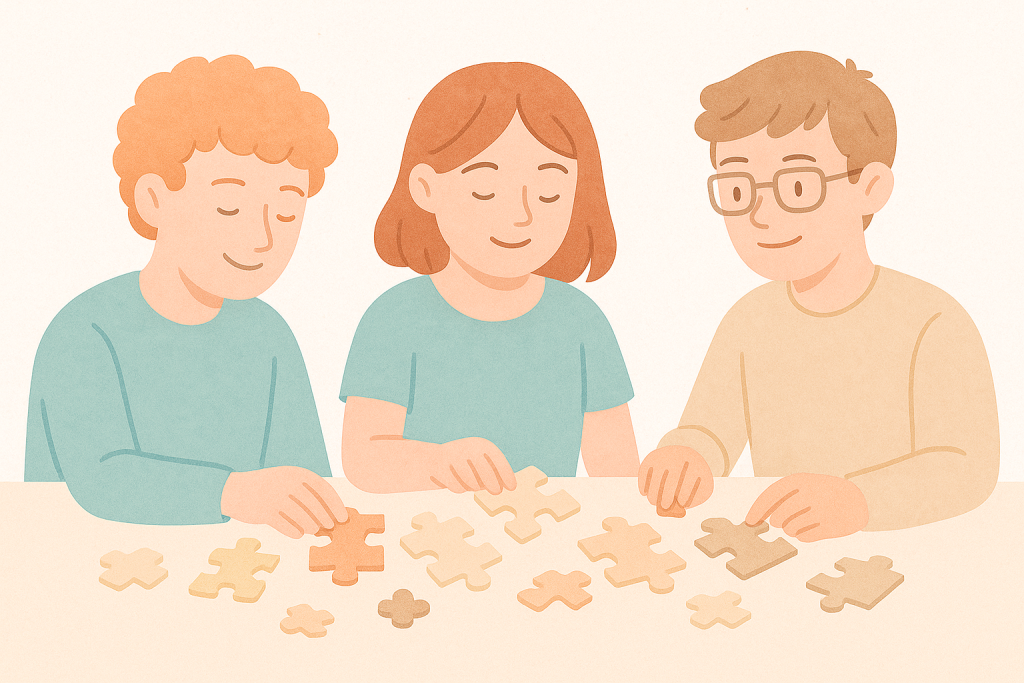by Kaitlyn Farrell, LPC
Autism spectrum disorder and obsessive compulsive disorder can look similar on the surface. Both can involve rituals, routines, and strong focus on details. The difference is that some behaviors bring comfort while others are driven by fear and anxiety. Many people live with both conditions at once. New research is showing us just how common this is and how therapy can be adapted to meet these needs.
What We Know from Research
- A 2025 study found that autistic people scored very high on obsessive compulsive traits, second only to people with full OCD diagnoses【pubmed.ncbi.nlm.nih.gov/39806378】.
- Reviews estimate that between 17 and 37 percent of autistic youth meet criteria for OCD【moveupaba.com】.
- Research also shows that autistic people with OCD may have fewer intrusive obsessional thoughts than people with OCD alone, but their repetitive behaviors still cause distress and disruption【bmcpsychiatry.biomedcentral.com】.
- Scientists are exploring shared biological roots, including immune system differences and changes in brain networks that regulate behavior and emotion【theaustralian.com.au】【arxiv.org】.
This means that if you or someone you love is autistic and also struggles with OCD symptoms, you are far from alone and treatment is possible.
How to Tell the Difference
- Ask about the purpose
Autistic routines often provide comfort and predictability. OCD compulsions are usually aimed at stopping something bad from happening. - Notice the feeling
If a behavior feels calming it may be part of autism. If it feels exhausting or unwanted it may be OCD. - Check the impact
Both conditions can interfere with daily life. The key question is whether the behavior restores balance or increases distress.
Strategies that Help
Adapted Therapy
Cognitive behavioral therapy and exposure response prevention are proven treatments for OCD. For autistic clients these work best with clear language, visual supports, and smaller steps. Research shows that with these adjustments improvements can last even if progress takes longer【iocdf.org】【prosperhealth.io】.
Respect Comforting Routines
Not all routines need to change. Some are helpful and part of identity. Therapy focuses on reducing the ones that cause anxiety or disruption rather than trying to eliminate every pattern.
Manage Sensory Stress
Many autistic people with OCD have strong sensory responses. Lowering noise and light, using calming textures, or planning sensory breaks can make coping easier. Therapists can build sensory supports into treatment plans.
Build Flexible Coping Tools
Grounding skills such as breathing exercises or mindfulness can interrupt OCD cycles. These same skills can also help with autistic sensory overload. The more options a person has, the better they can handle different situations.
Include Family and Allies
Support from parents, partners, or close friends makes a difference. Therapy sessions can teach them how to encourage progress without reinforcing compulsions. A home environment that reduces stress helps therapy work better.
Track Patterns Without Judgment
Keeping a daily log of behaviors, feelings, and triggers can make it easier to see what is autism, what is OCD, and where the two overlap. This clarity supports better treatment choices.
Moving Forward
Autism and OCD can create unique challenges, but research is showing that therapy works when it is tailored to both. With adapted strategies, respect for identity, and practical coping tools, people can reduce distress and gain more control in daily life. Living with both conditions does not mean living without hope.
